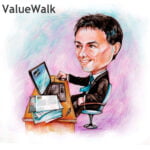Madera Technology Partners commentary for the month of September 2017, titled, “Getting In Touch With Reality.”
Dear Partner,
Madera Next, our very concentrated market neutral disruptive entertainment and telecom strategy, up 42.7% through September
Madera Technology Master Fund, our concentrated long/short equity strategy, up 1.3% in the month and up 16.4% for the year through September
Finding opportunity when the market believes one thing and we have data to prove otherwise
Shocking data of the day
(Only) Two-thirds of Netflix viewing is on a TV. The amount of mobile viewing, both in developed markets and especially in emerging economies, is profound. When we think about the companies that enable and benefit from this secular trend over the next twenty years, we are especially excited for our Madera Next strategy.
Didi and Docker
We recently worked on financing rounds for Didi Chuxing (affectionately the “Uber of China") and Docker (the next VMware). Docker is an especially interesting under-the-radar opportunity, and we hope to play a helpful role to Steve, Solomon, Mike, and team as the world continues its journey to the Cloud. Docker is valued at $1 billion, and its elder cousin VMware has a market capitalization of more than $48 billion. As one of the largest shareholders of VMware in a prior life, we see a lot of VMware in Docker. The Cloud, agile mobile applications, and data sovereignty are all trends that Docker enables. We are very excited to help create tremendous value along this Cloud journey.
Disruptive technologies can be confusing for investors, especially when the companies empowering that change are a bit too old for early stage venture funds and much too young for traditional public equity investors. They are awkwardly caught in the middle. This gap in “fit” and understanding allows us to leverage our domain expertise and create opportunity for ourselves. Leveraging our rich network of friends and colleagues in the technology community, we will continue to take advantage of these inefficiencies.
Getting in touch with reality
One pattern that we look for is when investors have a misplaced understanding of a company’s fundamentals: basically when investors are not in touch with reality.
We spend a significant amount of our time getting our boots dirty out in the field: observing, soaking the world in, collecting data. Few things in the real world act quite as one might expect solely by looking at an Excel model and historical financial statements. Analysis in a vacuum certainly makes predicting the future more difficult.
An important aspect of our process focuses on understanding the behaviors and motives of the customer. Everything starts with the customer, be it an enterprise CEO or a teenager in an emerging economy. Real human behavior (the actual buying of goods & services) drives business. Financial models are great at keeping score (the what), but data help explain the why. The preconceived notions that permeate Wall Street are broken down over time. By getting ahead of the enlightenment of others we can profit.
We dedicate so much of our effort to gathering information from across the globe in strange, seemingly unrelated nooks and crannies because this information from the real world is what ultimately drives the companies that we invest in and promotes divergent views. This is how we figured out Netflix would be big in places like Delhi, Guadalajara, and Lima. We go out to the real-world, build a data process, collect and analyze the information, and then invest. We like when the consensus believes one thing, and we have hard facts via our data to prove otherwise.
Our financial models are extremely robust and detailed, but the real insight comes figuring out the real world.
Technology disrupting real estate
As you know, retail real estate being disrupted by technology has been a big thesis of ours for some time. Several of our short positions are -59%, -39%, -40%, -40%, -35%, and -30% from recent peaks. This risk is driven by technology disruption and there is significant downside remaining. Solvency is a concern. We recently sought to re-underwrite our thesis using the latest information, so we flew out to collect some data the old-fashioned way.
Below is one example of our data gathering. This is from one of the premier retail assets in the country. We caveat that this is a point in time and maybe it was an off day, but we would have expected it to be a bit busier:
Here is a list of foot traffic by store. The red arrows denote stores that mall operators have highlighted as next generation retailers that are the future.
Dining was the bright spot with the restaurants mostly half full. Many of the better malls are investing significant capex dollars to expand food courts and attract more restaurants. The hope is enhanced food and dining will drive higher foot traffic and therefore drive higher retail sales. We observe food and dining does indeed bring in foot traffic, but only to the restaurants. Not the stores as hoped for.
Our view has been that retail real estate is one of the best short opportunities since 2008. We have continuously tested and reinforced our views based on a number of disparate data streams, and we continue to see tremendous downside opportunity as the secular disruption in commerce continues unabated. The risk-reward is significantly asymmetric, and we believe certain shorts in this thesis will go bankrupt.
Our holistic process, which looks beyond traditional boundaries and across asset classes, highlights increased risk of bankruptcy. The value of the real estate investment trust (REIT) is the summation of the underlying properties. A key issue is that many investors, likely lacking the facilities to analyze each individual property at scale, instead rely on consensus models based primarily on historical (read backwards looking) information. Our near real-time data highlight the weakest assets are going bankrupt and the rest have declining cash flow. Consensus assumes growth. This is not cyclical weakness but rather secular disruption driven by technology. Credit markets have slowly started recognizing the risks, though the insatiable thirst for yield has kept sinking assets afloat until the very end when there is then a sudden 100% loss. The equity market is further behind the information flow.
It appears that Bon-Ton stores are likely to close. General Growth Properties (GGP), Washington Prime Group (WPG), CBL, Pennsylvania Real Estate Investment Trust (PEI), and Macerich (MAC) all have material exposure. Whereas most investors classify malls in very general A, B, and C quality terms, we use our mapping software within JSTARS to evaluate things on an individual property basis at scale. The conclusion is that what many think are safe assets may not be so.
Vista Ridge Mall in Lewisville, Texas (near Dallas) reportedly sold for $17.3 million resulting in a 72% loss to investors. Several tranches of the associated CMBS trust are likely to be completely wiped out. The property had been appraised for $144 million. The mall is anchored by Dillard’s, JC Penney, Macy’s, and Sears. Importantly, the mall includes a 15-screen theater (theaters have been held as one of the saviors for malls and are tangentially related to our over-the-top video and cord cutting thesis: why pay $20 per movie ticket for disappointing content when you can pay $11 per month for content that delights you?). There is also another 12-screen theater at the mall (so 27 screens in total), but that is unused. Vista Ridge was a GGP property.
Moreno Valley Mall near Los Angeles, California has reportedly sold for $52 million resulting in a slightly more modest 51% loss to investors. The mall generates sales productivity of $423 per foot, putting it squarely in the “safe” B mall heuristic that many investors rely upon. Similarly, the occupancy rate is listed as 95% occupied (very good). However, when we strip out temporary tenants, occupancy falls to less than 75% (very bad). We have seen 90% occupancy as the threshold where the asset can tip towards bankruptcy. The mall had been appraised at $118 million. The implied cap rate is 12.5% (lower is better and over 8% is troublesome for public shares in mall REITs). Moreno Valley was a GGP property.
We believe it is important to look across asset classes to have a robust and well informed thesis.
To get insight into what is likely to happen next, we think there is something to be gleaned in studying the strategy of an industry leader. On September 27th, J. C. Penney CEO Marvin Ellison and CFO Jeff Davis met with investors to outline their strategy for addressing the headwinds the Company faces. We believe the strategy places additional risk on the underlying real estate value.
- “2017 has been the most promotional year [JCP management] are aware of, as competitors have run promotions JCP has never seen before”
- The new strategy focuses on price discounting (increased downward price pressure is bad for retail rent) and inventory (less of it means less demand for space)
- Shifting from a purely store-level free cash flow (FCF) analysis to one that includes geographic and strategic importance (is the location in the middle of nowhere or is the location expensive to ship goods to?) as well as the health of the surrounding real estate—essentially the realization that someone else’s problem is also your problem (more store closures coming = bad for underlying real estate)
- Reducing the number of physical samples (= bad for underlying real estate)
- Implementing fewer deliveries to lower volume stores (= bad for underlying real estate)
- Shifting from multiple sources of a product line to a single source (= bad for underlying real estate)
- Experimenting with a smaller Sephora store-within-a-store concept (= bad for underlying real estate)
- Integration of more stores into the omnichannel (ecommerce) model will lead to distribution center rationalization (= bad for underlying real estate)
One of the most powerful positives revolves around a key component of our Madera Next fund strategy: disruptive telecommunications.
- JCP is making a big push into home appliances with category specific showrooms in 20% more stores compared to last year
- An appliance is more gross profit dollars than a pair of jeans
- But an appliance is lower gross margin percentage, making it even more important to hone efficiencies and foster additional monetization
- Appliances have 70% attach rate of private label credit cards (lower cost and higher loyalty)
- Appliances similarly have strong warranty attach rates
- And here is where the magic is: internet of things (IoT) enabling spectrum
We view spectrum as one of the most strategic and rare assets driving the future of business. More on this next month.
Chicago
We officially opened our Chicago office. We have had the space for a few months, but an office is not complete until the espresso machine is setup. The new office is in an industrial warehouse—far away from the noise of Wall Street—and it sits atop the fiber routes serving both financial exchanges and direct connections to Amazon AWS, Google, and Microsoft Azure clouds. For any of our Chicago-based partners, if you’d like to chat about technology, the market, or our data, we can set up office hours anytime. We brought the coffee beans with us from Toby’s Estate in Williamsburg, Brooklyn.
Feel free to reach out anytime if you'd like to discuss.
Thank you,
Kris













